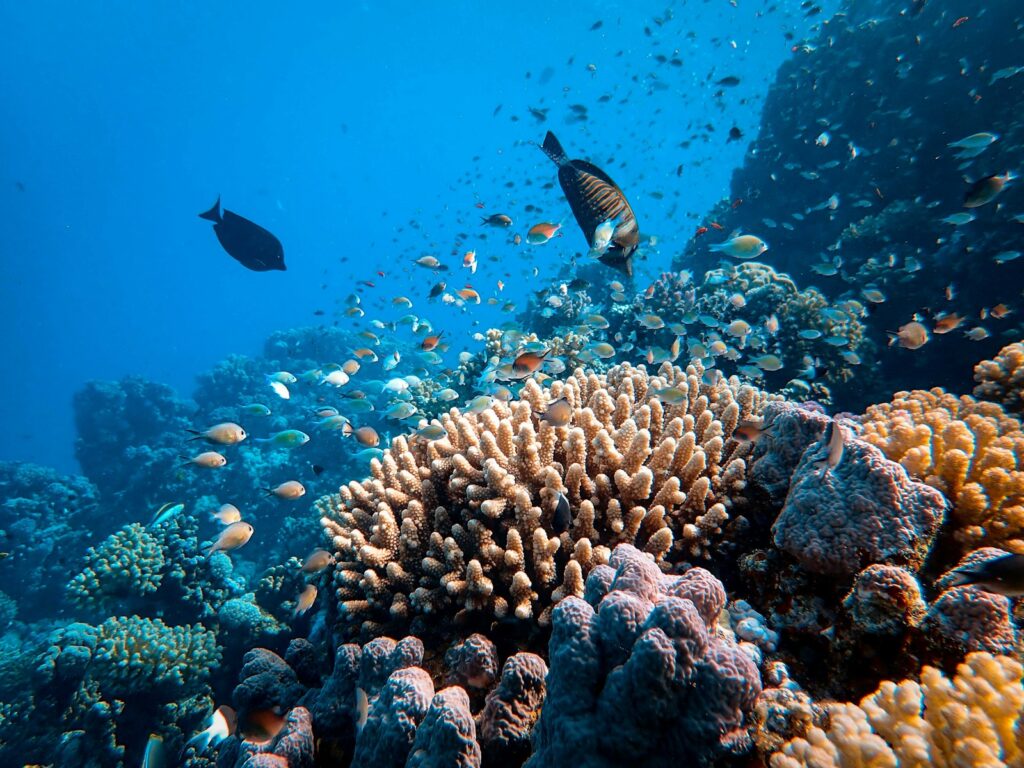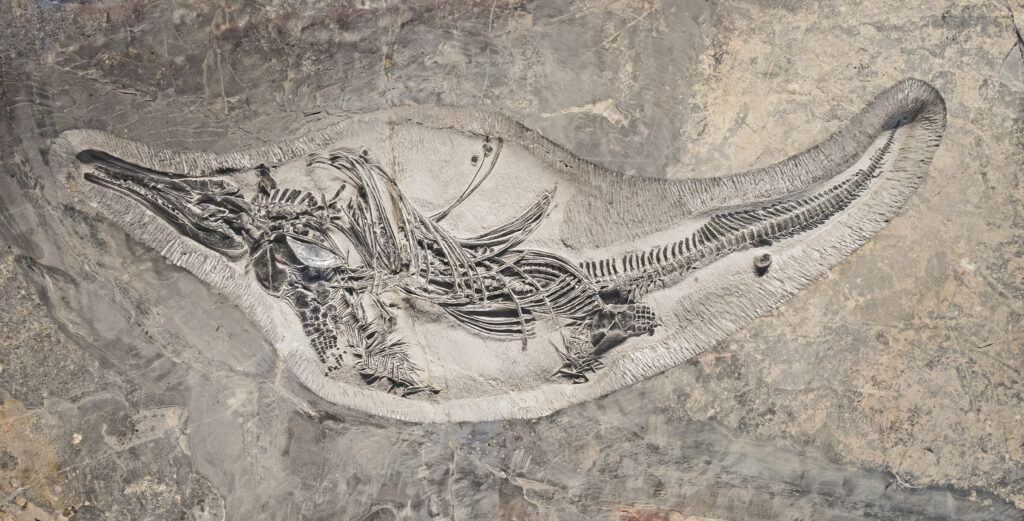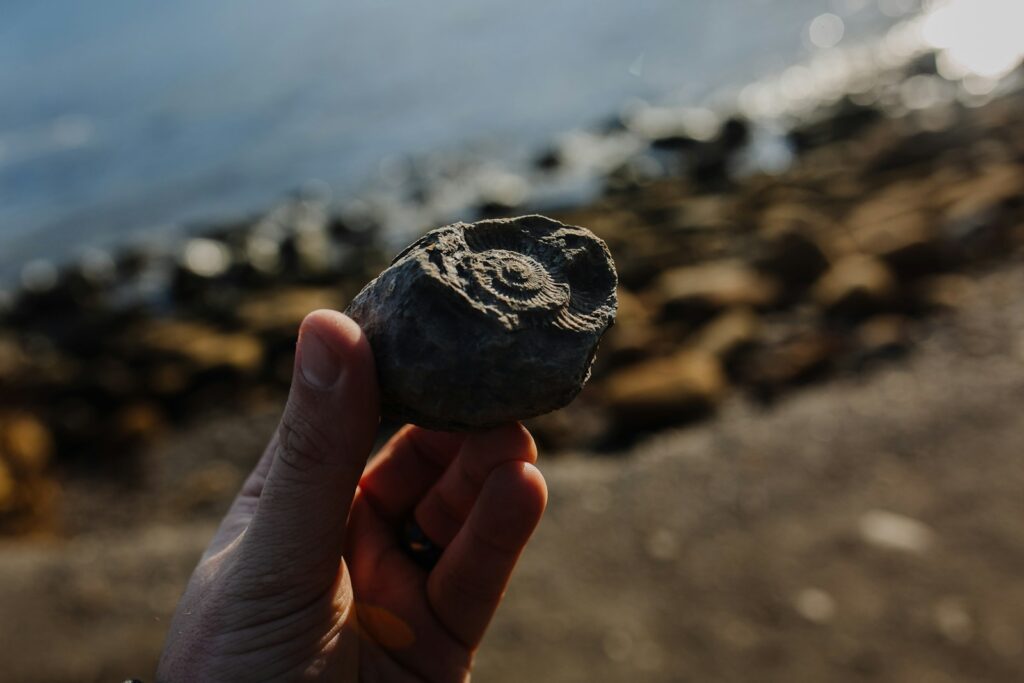The history of life on Earth spans billions of years, with countless species having lived and died across the planet’s dynamic lifetime. Yet our fossil record—the collection of preserved remains that informs our understanding of prehistoric life—represents only a tiny fraction of all organisms that have ever existed. This remarkable disparity isn’t just a curious footnote in paleontology; it fundamentally shapes our understanding of evolution, biodiversity, and extinction. The process of fossilization is extraordinarily selective, requiring specific conditions that most deceased organisms never encounter. This natural bias in preservation creates significant challenges for scientists attempting to reconstruct Earth’s biological history and holds profound implications for how we interpret the story of life itself.
The Rarity of Fossilization

Fossilization is an exceptionally rare event in nature, with most estimates suggesting that less than one percent of all species that have ever lived are represented in the fossil record. This scarcity stems from the complex and specific circumstances required for preservation. Most organisms decompose completely after death, leaving no trace of their existence. Bacteria, fungi, scavengers, and natural elements rapidly break down organic material, typically erasing all evidence within weeks or months. Even among those creatures that die in potentially preservative environments, only a minuscule percentage undergo the chemical and physical transformations necessary to become fossils. The sheer improbability of fossilization means that countless species, lineages, and even entire ecosystems have disappeared without leaving any direct evidence of their existence.
The Perfect Conditions for Preservation

For a deceased organism to fossilize, it must experience a specific sequence of conditions that protect it from the typical processes of decomposition. Rapid burial is usually the first crucial step, as it shields remains from scavengers and oxygen-dependent decay. This explains why marine organisms are disproportionately represented in the fossil record—sediment on ocean floors can quickly cover dead creatures. After burial, mineral-rich water must permeate the remains, gradually replacing organic material with minerals through a process called permineralization. Alternatively, impressions or molds might form in surrounding sediments. The most ideal environments for fossilization include lake bottoms, river deltas, tar pits, volcanic ash deposits, and amber (tree resin) that can entrap and preserve small organisms. These special circumstances create a profound bias in what enters the fossil record, favoring certain habitats, body types, and geographic locations.
Soft-Bodied Organisms: The Missing Majority

Soft-bodied organisms represent the overwhelming majority of Earth’s biodiversity, yet they are dramatically underrepresented in the fossil record. Creatures lacking hard parts like shells, bones, or teeth—including worms, jellyfish, most insects, and many primitive animals—rarely fossilize because their soft tissues decompose too quickly for preservation processes to occur. This preservation bias creates a skewed perception of prehistoric ecosystems. The Burgess Shale in Canada and Chengjiang fossils in China stand as rare exceptions, offering glimpses into soft-bodied communities through exceptional preservation conditions. These unusual fossil beds reveal diverse soft-bodied fauna that would otherwise be completely unknown to science, suggesting that similar organisms likely existed throughout Earth’s history but simply didn’t preserve. This “soft-tissue bias” means we have an incomplete picture of past biodiversity, particularly among invertebrates that typically constitute the foundation of food webs.
The Geographic Bias of Fossil Formation

Fossilization doesn’t occur evenly across Earth’s surface, creating significant geographic biases in our understanding of prehistoric life. Environments conducive to fossil formation—like shallow seas, river deltas, and lakes—produce far more fossils than environments like mountains, rainforests, or tundra, where rapid decomposition prevails. This disparity means entire ecosystems from certain regions may be virtually absent from the fossil record. Modern accessibility further compounds this bias; fossil sites in remote, politically unstable, or economically disadvantaged regions often remain unexplored compared to well-studied areas in North America and Europe. The fossil-rich Morrison Formation of the American West has been exhaustively documented, while equivalent-age rocks in parts of Africa or Asia remain comparatively understudied. These geographic biases create a lopsided understanding of past biodiversity, with some regions’ prehistoric fauna extensively cataloged while others remain mysterious.
Size Matters: The Preservation Advantage of Larger Organisms

The size of an organism significantly impacts its fossilization potential, creating another substantial bias in the fossil record. Larger animals with robust skeletons or shells—like dinosaurs, ancient marine reptiles, and shelled invertebrates—are disproportionately preserved compared to smaller creatures. This size bias stems from several factors: larger bones and shells are more resistant to destruction; they’re more likely to survive transport before burial; and they’re simply easier for paleontologists to find. Meanwhile, microorganisms and small invertebrates, despite their ecological dominance both past and present, leave fewer traces. Even when small organisms do fossilize, they’re more likely to be overlooked during collection or require specialized techniques for discovery and analysis. This preservation disparity creates a misleading impression that prehistoric ecosystems were dominated by large, charismatic species, when in reality, as today, the smaller organisms likely constituted the bulk of both biomass and species diversity.
The Time Gap: Missing Links and Transitional Forms

The sporadic nature of fossilization creates significant time gaps in the evolutionary record, particularly challenging our ability to document transitional forms between major groups. These “missing links”—organisms showing intermediate characteristics between established lineages—are especially crucial for understanding evolutionary transitions but are statistically unlikely to fossilize due to their typically small populations and often brief existence. The evolution from fish to tetrapods (four-limbed vertebrates), for example, was long represented by substantial gaps until discoveries like Tiktaalik provided rare glimpses of transitional anatomy. Similarly, the evolution of birds from dinosaurs, whales from land mammals, and humans from earlier primates all suffered from fossil gaps that fueled scientific debate for decades. Each transitional fossil discovery represents a statistical anomaly—a creature that happened to die in perfect preservation conditions despite belonging to a group with generally poor fossilization potential. These gaps don’t indicate flaws in evolutionary theory but simply reflect the inherent limitations of the fossil record itself.
The Enigma of Extinct Ecosystems

The selective nature of fossilization creates profound challenges for reconstructing extinct ecosystems in their entirety. Paleontologists attempting to understand prehistoric food webs, community interactions, and ecosystem dynamics must contend with massive data gaps where entire functional groups may be missing from the fossil record. Soft-bodied primary producers, parasites, and numerous small consumers typically leave little trace, despite playing crucial ecological roles. Consider the Late Cretaceous period: while we have substantial fossil evidence of large dinosaurs, the insects they may have eaten, the plants that supported the ecosystem, and the microorganisms that drove nutrient cycling remain largely invisible in the record. Scientists must therefore employ comparative methods, drawing parallels with modern ecosystems, and use trace fossils (preserved evidence of biological activity) to make educated inferences about missing components. This patchwork approach means our understanding of ancient ecology contains significant speculation alongside empirical evidence, with many interactions and dependencies remaining permanently obscured.
Lagerstätten: Windows into Complete Ancient Communities

Occasionally, extraordinary fossil deposits called Lagerstätten (singular: Lagerstätte) provide rare glimpses into the true diversity of ancient ecosystems by preserving organisms that typically never fossilize. These exceptional preservation sites form under unusual conditions, like oxygen-free lake bottoms or fine volcanic ash fall, which inhibit decay and preserve soft tissues, small organisms, and fine details normally lost to decomposition. Famous examples include Germany’s Solnhofen Limestone (home to Archaeopteryx fossils), China’s Liaoning deposits (featuring feathered dinosaurs), and the Green River Formation in Wyoming (preserving entire fish communities with insects and plants). These sites reveal that prehistoric biodiversity was far richer than the regular fossil record suggests, showcasing delicate structures like feathers, skin impressions, and internal organs. Lagerstätten demonstrate conclusively that our normal fossil record provides only a heavily filtered sample of past life. Each new exceptional preservation site discovered dramatically reshapes our understanding of ancient ecosystems, revealing previously unknown organisms and complex ecological relationships.
Extinction Events: Underestimating the Losses

The selective nature of fossilization significantly impacts our understanding of mass extinction events throughout Earth’s history. Since most species never enter the fossil record at all, paleontologists can only track extinction patterns among readily fossilized groups, potentially underestimating both the magnitude and selectivity of extinction events. During the end-Cretaceous extinction that eliminated non-avian dinosaurs, for instance, scientists can confidently track the fate of shelled marine creatures, but have much less data on soft-bodied organisms or terrestrial invertebrates. This preservation bias means extinction rates calculated from fossil data almost certainly underestimate actual biodiversity losses. Additionally, apparent sudden extinctions in the fossil record may represent more gradual declines that appear abrupt due to inadequate sampling. The fossil record’s inherent incompleteness creates significant challenges for scientists attempting to determine precise extinction percentages, rates of decline, and recovery patterns following these planetary catastrophes. Despite these limitations, paleontologists employ statistical methods to estimate true extinction magnitudes and develop increasingly sophisticated approaches to compensate for the fossil record’s inherent biases.
Molecular Clocks: Filling Gaps in the Fossil Record

To overcome the limitations of the incomplete fossil record, modern scientists increasingly rely on molecular clock techniques that analyze genetic differences among living organisms to estimate when their ancestral lineages diverged. This approach provides crucial insights about evolutionary timelines that may be invisible in the fossil record. By measuring the accumulated genetic differences between species and calibrating these changes against known fossil dates, researchers can estimate approximately when various evolutionary branching events occurred. Molecular clocks have been particularly valuable for understanding the evolution of groups with poor fossilization potential, such as soft-bodied organisms and many microscopic lifeforms. These techniques have revealed that many important evolutionary divergences likely occurred much earlier than the fossil record indicates. For instance, molecular data suggests mammals diversified substantially before their fossil record shows expansion, and many animal phyla likely originated long before the Cambrian Explosion, when their fossils first became abundant. By integrating molecular and fossil evidence, scientists create a more complete picture of life’s evolutionary history despite the fossil record’s inherent gaps.
Conservation Implications: Learning from Past Preservation Biases

The selective nature of fossilization holds important lessons for modern conservation biology and biodiversity assessment. Today’s ecosystems contain countless organisms, particularly insects, soft-bodied invertebrates, and soil microbiota, that would likely leave minimal fossil evidence if they disappeared tomorrow. This parallel between past preservation biases and present biodiversity monitoring challenges reminds us that visible, charismatic species represent only a fraction of ecological communities. Conservation efforts focused exclusively on vertebrates or other easily observable organisms risk overlooking crucial ecosystem components. Many modern ecosystems, especially in tropical regions, remain incompletely cataloged, with new species regularly discovered. The fossil record’s limitations provide a sobering reminder that biodiversity can decline dramatically before becoming apparent in our imperfect monitoring systems. Just as paleontologists must make inferences about missing components of ancient ecosystems, conservation biologists must develop strategies to protect not just known species but also the ecological processes and undiscovered organisms that sustain ecosystem function. The fossil record’s biases offer a profound warning about the ease with which entire biological communities can disappear without leaving adequate evidence of their existence.
Citizen Science and New Technologies: Expanding the Fossil Record

Despite the inherent limitations of fossilization, our understanding of prehistoric life continues expanding through technological innovations and broader participation in fossil discovery. Advanced imaging techniques like micro-CT scanning now reveal internal structures in fossils previously impossible to study without destroying specimens. Chemical analysis methods can detect molecular fossil evidence, like ancient proteins and pigments, providing information about soft tissues long since decayed. Systematic exploration of previously understudied regions and geological formations is gradually addressing geographic biases in our fossil knowledge. Importantly, citizen science initiatives have democratized fossil hunting, with amateur paleontologists responsible for numerous significant discoveries that might otherwise have remained buried. Digital databases and online repositories make fossil information more accessible to researchers worldwide, facilitating meta-analyses that extract broader patterns from the collective fossil record. While these advances cannot overcome the fundamental constraints of taphonomy (the study of how organisms decay and become fossilized), they maximize what we can learn from the limited window into the past that fossilization provides. Future technological developments promise to further expand our ability to interpret the tantalizing fragments of Earth’s biological history that survived the highly selective fossilization filter.
The Value of Absence: What Missing Fossils Teach Us

The absence of fossils for most prehistoric creatures isn’t simply a limitation to be lamented—it also serves as a powerful reminder of nature’s impermanence and the extraordinary circumstances required to leave lasting evidence of existence. This recognition of absence inspires scientific humility, reminding paleontologists that any reconstruction of past life represents a hypothesis based on incomplete evidence. The selective nature of fossilization teaches valuable lessons about sampling bias that apply across scientific disciplines, from ecology to archaeology. By acknowledging what we cannot know with certainty, scientists develop more nuanced interpretations of the evidence that does exist. The fossil record’s limitations also heighten the value of each discovery, with even fragmentary fossils potentially providing crucial insights unavailable elsewhere. Perhaps most profoundly, understanding fossilization’s rarity gives us perspective on our fleeting existence. The vast majority of species that lived on Earth left no trace of their passing, yet they participated in the great ecological and evolutionary processes that shaped our planet. This humbling reality encourages appreciation for both the remarkable fossils that have survived and the countless lost stories they represent.
Why Fossils Are the Exceptions, Not the Rule

Our understanding of life’s history comes from an extraordinarily biased sample—a collection of lucky accidents where specific conditions allowed preservation of a tiny subset of Earth’s past inhabitants. This reality doesn’t diminish the value of paleontology but rather frames it properly as the interpretation of rare windows into ancient worlds. As we continue developing technologies and methodologies to extract maximum information from the limited fossil record, we simultaneously acknowledge its inherent incompleteness. The story of life on Earth, billions of years in the making, will always contain chapters we cannot read and characters we will never meet. Yet within these constraints, the fossil record remains our most tangible connection to the planet’s biological heritage—a remarkable, if incomplete, library of life’s enduring story.




